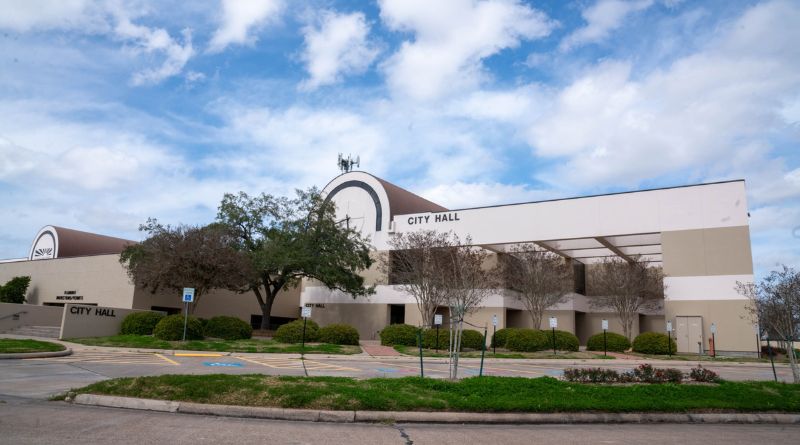
The City of Missouri City Public Infrastructure Design Manual serves as a comprehensive guide for the planning, design, construction, and maintenance of public infrastructure within the city. This manual is intended for use by city engineers, planners, architects, contractors, and other professionals involved in the development and management of Missouri City’s public infrastructure projects. It outlines the technical standards, procedures, and requirements necessary to ensure that infrastructure systems meet the city’s needs for sustainability, safety, and long-term functionality.
Table of Contents
Overview of the Manual
The City of Missouri City Public Infrastructure Design Manual is structured to provide a detailed framework that aligns with local regulations and standards. It covers various aspects of public infrastructure, such as transportation, stormwater management, water and wastewater systems, and public utilities. Its purpose is to ensure that all infrastructure projects adhere to high standards of quality, safety, and efficiency.
In addition to regulatory requirements, the manual also emphasizes the importance of incorporating innovative and sustainable design practices. By doing so, it helps to create a resilient urban environment that can adapt to challenges posed by growth, climate change, and other external factors.
Key Sections of the Manual
1. Transportation and Roadway Design
One of the primary focuses of the manual is the design of roadways, highways, and transportation systems. This section provides guidelines for:
- Roadway classifications and dimensions
- Pavement design standards
- Traffic control devices and signage
- Pedestrian and bicycle infrastructure
- Intersections and traffic flow
These guidelines ensure that the transportation system is efficient, safe, and accessible for all users, from vehicles to pedestrians and cyclists.
2. Stormwater Management
The City of Missouri City Public Infrastructure Design Manual also addresses stormwater management, which is critical for protecting the city’s environment and ensuring that water flows are properly managed during storms. Key considerations in this section include:
- Drainage systems and storm sewer design
- Floodplain management and flood control measures
- Erosion and sedimentation control
- Best management practices for stormwater quality
The guidelines aim to reduce the risk of flooding, protect natural water systems, and maintain water quality through proper stormwater infrastructure design.
3. Water and Wastewater Systems
Reliable water supply and wastewater disposal are fundamental components of any city’s public infrastructure. This section of the manual provides specifications for:
- Water distribution systems (pipes, pumps, storage)
- Wastewater collection systems (sewer lines, lift stations)
- Treatment plants and facilities
- Backflow prevention and cross-connection control
These standards ensure that Missouri City’s water systems are designed to meet both current and future demands while maintaining the safety and efficiency of the water supply and wastewater systems.
4. Public Utilities
Public utilities such as electricity, natural gas, and telecommunications are also critical components of urban infrastructure. The manual offers guidance on:
- Coordination with utility providers
- Underground and overhead utility placement
- Utility crossings and clearances
- Infrastructure for new developments and redevelopment projects
Proper utility design and coordination help prevent conflicts between infrastructure systems and reduce disruptions during construction or future maintenance work.
5. Sustainability and Green Infrastructure
Sustainability is an important consideration in modern infrastructure design. The City of Missouri City Public Infrastructure Design Manual includes recommendations for incorporating green infrastructure solutions, such as:
- Green roofs and walls
- Permeable pavements
- Urban trees and landscaping
- Low-impact development (LID) techniques
These practices help manage stormwater, improve air quality, and enhance the aesthetic appeal of urban spaces, contributing to a healthier and more sustainable city environment.
Design Considerations and Best Practices
To ensure the successful implementation of public infrastructure projects, the manual emphasizes the importance of certain key design principles:
1. Context-Sensitive Design
Designing infrastructure in a way that complements the existing urban fabric is crucial. This includes considering the aesthetic, cultural, and environmental factors of the area. Context-sensitive design ensures that new infrastructure blends seamlessly with surrounding neighborhoods and natural landscapes.
2. Safety and Accessibility
Public infrastructure must be designed with safety as the top priority. The manual provides detailed guidelines for creating infrastructure that minimizes risks to both pedestrians and vehicles. Additionally, accessibility standards are incorporated to ensure that all members of the community, including those with disabilities, can use the infrastructure comfortably and safely.
3. Collaboration and Stakeholder Engagement
Collaboration with stakeholders, including local residents, business owners, and government agencies, is encouraged throughout the design and implementation phases. Engaging the community helps identify concerns, preferences, and potential issues early on, leading to better-designed infrastructure that meets the needs of all.
4. Resilience and Future-Proofing
Infrastructure should be designed to endure the challenges posed by time, climate, and growing populations. The manual encourages the use of durable materials and design strategies that allow for future expansion or upgrades. This ensures that Missouri City’s infrastructure can adapt to evolving needs over the coming decades.
Approval Process and Compliance
Once infrastructure designs are completed, they must go through a review and approval process with the City of Missouri City’s Public Works Department. The approval process ensures that all designs comply with the standards set out in the City of Missouri City Public Infrastructure Design Manual. This process may include:
- Submission of design plans and calculations
- Review by city engineers and other departments
- Public hearings or community meetings (if necessary)
- Permitting and inspections
Ensuring compliance with the manual’s guidelines during the approval process helps to maintain high-quality infrastructure projects and avoid costly mistakes or rework during construction.
Importance of the Manual
The City of Missouri City Public Infrastructure Design Manual is an essential tool for ensuring that the city’s infrastructure meets the needs of residents, businesses, and visitors. By following the manual’s guidelines, the city can achieve high standards of quality, safety, and sustainability, which are vital for the long-term success and growth of the community.
Moreover, the manual provides a standardized approach to infrastructure design, which helps to streamline the planning and construction processes, saving both time and resources. It also promotes consistency across various infrastructure projects, which is important for maintaining a cohesive and functional urban environment.
FAQs
1. Who is responsible for adhering to the design manual?
The manual is intended for use by a wide range of professionals involved in infrastructure projects, including engineers, architects, contractors, and city planners. All individuals or entities involved in the design and construction of public infrastructure within Missouri City must adhere to the guidelines outlined in the manual.
2. Is the manual available to the public?
Yes, the City of Missouri City Public Infrastructure Design Manual is publicly available for review. Residents, developers, and other interested parties can access the manual through the city’s official website or by contacting the Public Works Department for further information.
3. How often is the manual updated?
The manual is regularly updated to reflect changes in local regulations, best practices, and emerging technologies. It is important for stakeholders to stay informed of any revisions to ensure that their projects remain compliant with the latest standards.
4. Are there penalties for non-compliance?
Yes, if a project does not comply with the standards set forth in the manual, the city may require revisions to the design or impose fines. Non-compliance can lead to delays in project approval or construction, making it essential for all parties to follow the guidelines carefully.
5. How can I get assistance with understanding the manual?
If you have any questions or need assistance understanding specific sections of the manual, you can contact the Public Works Department or consult with a qualified engineer or designer familiar with the city’s infrastructure standards.
In conclusion, the City of Missouri City Public Infrastructure Design Manual plays a critical role in shaping the city’s infrastructure. It provides a clear and structured approach to designing and constructing safe, sustainable, and efficient public systems that serve the community today and in the future.






